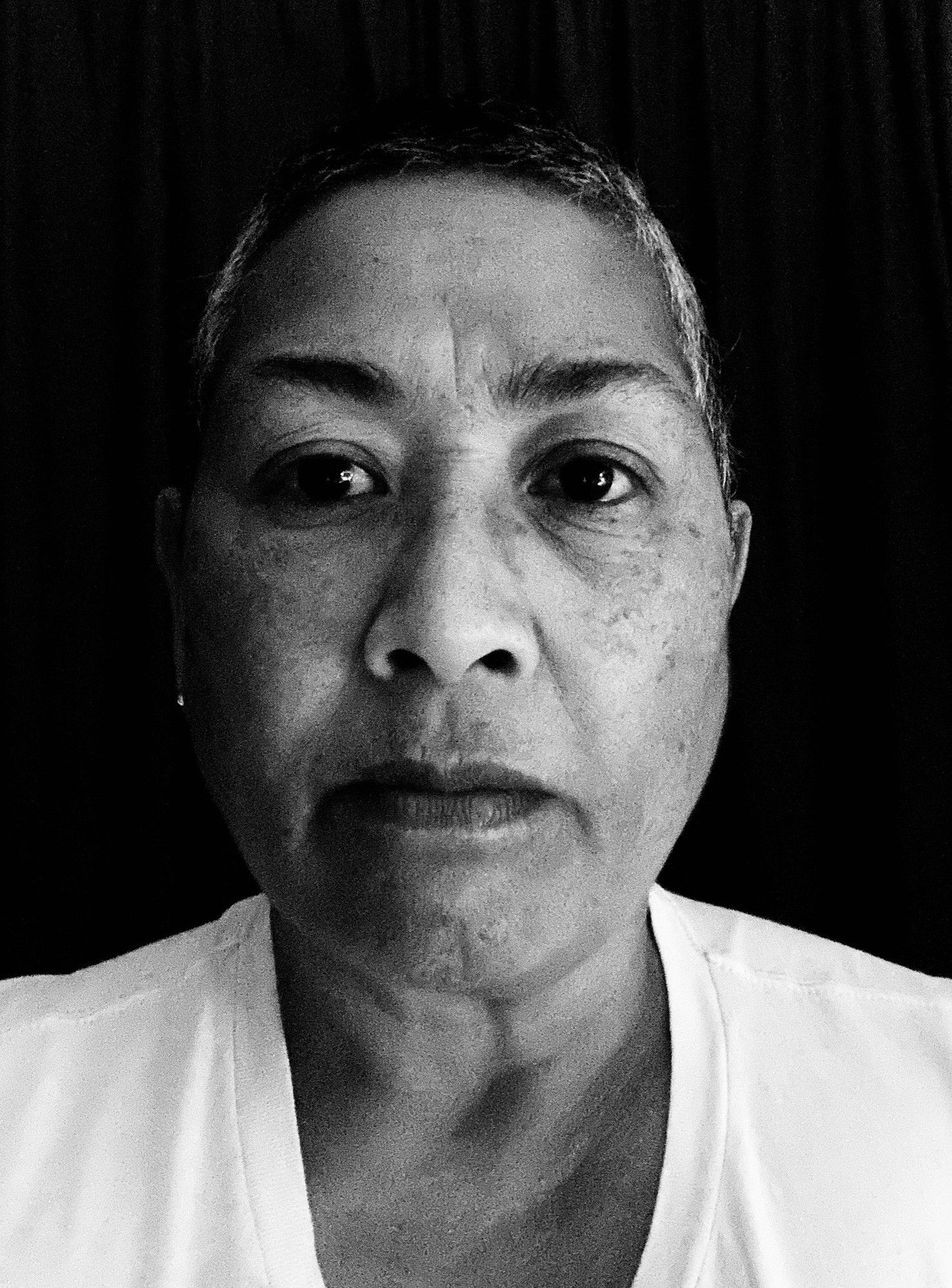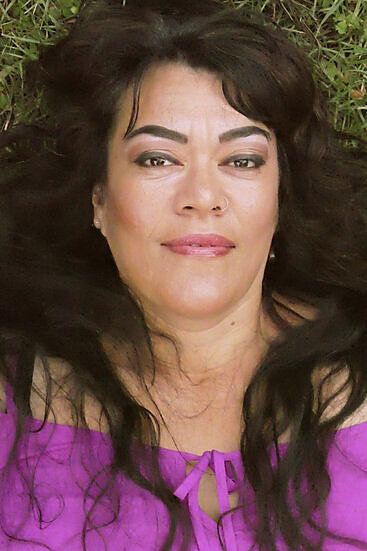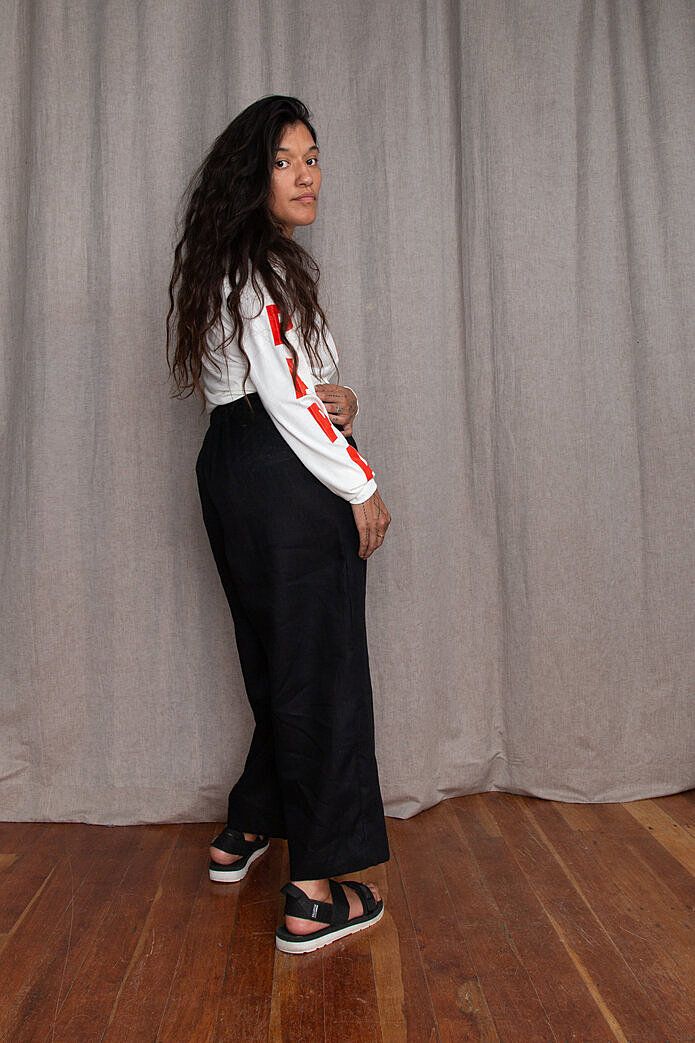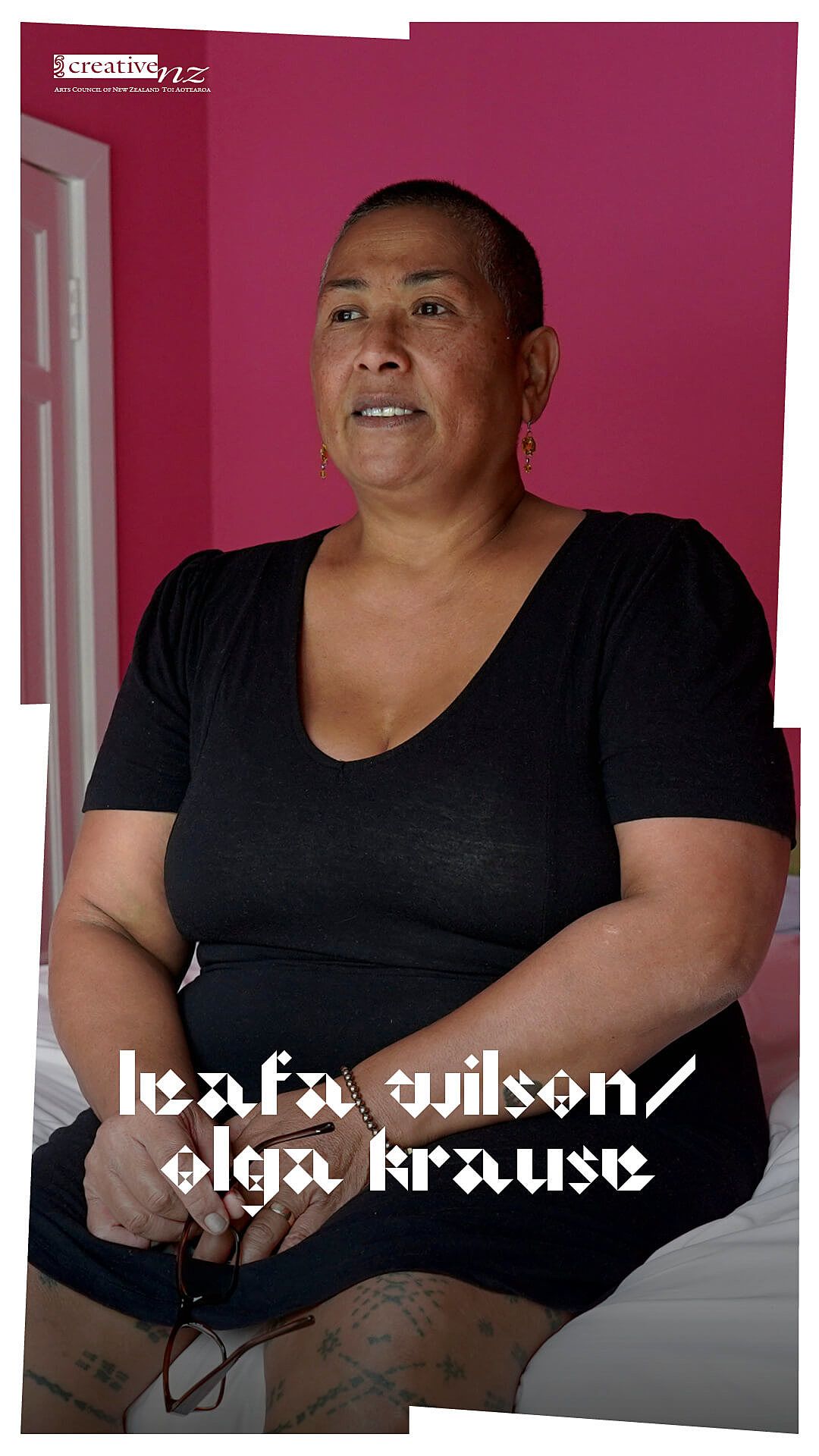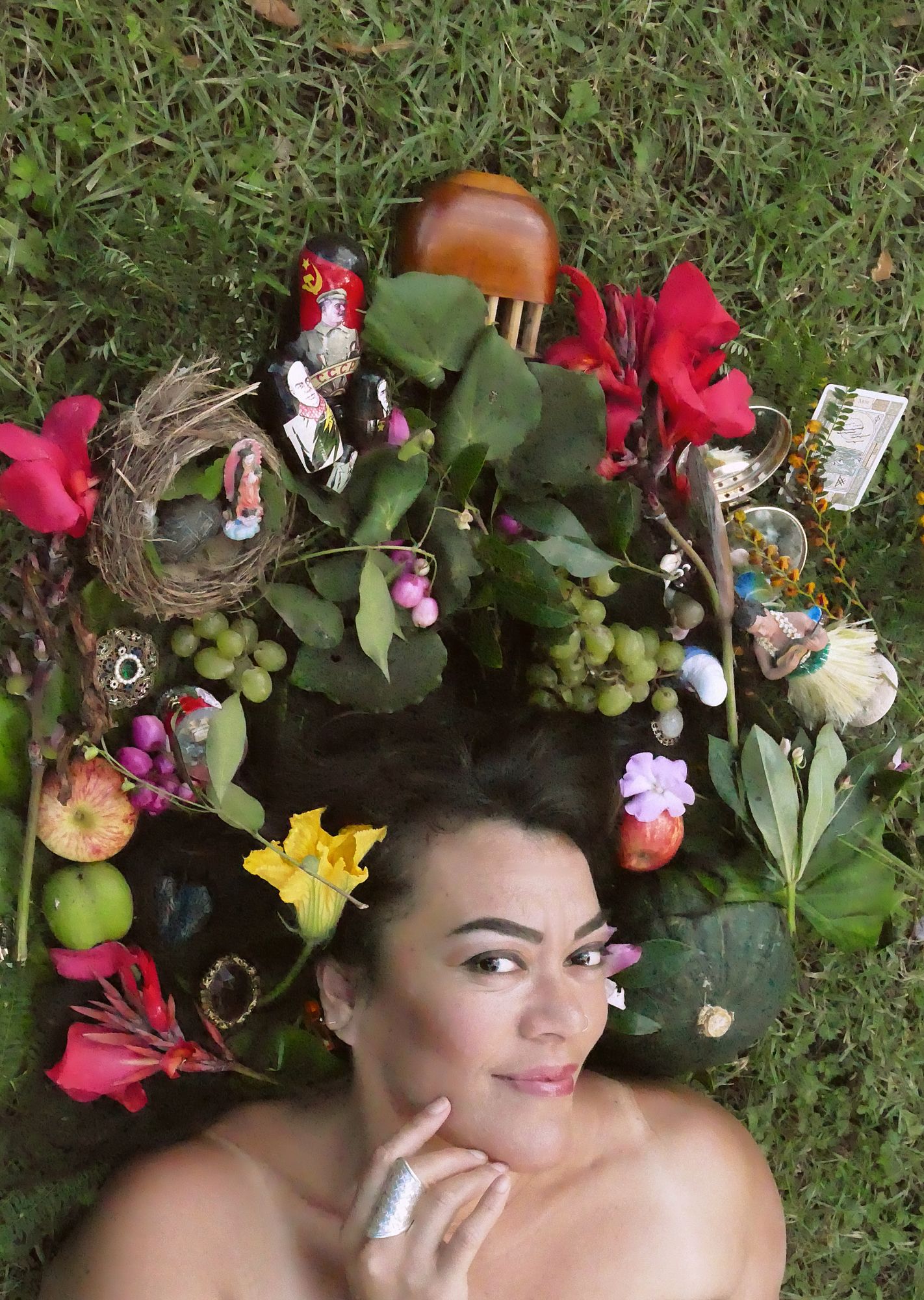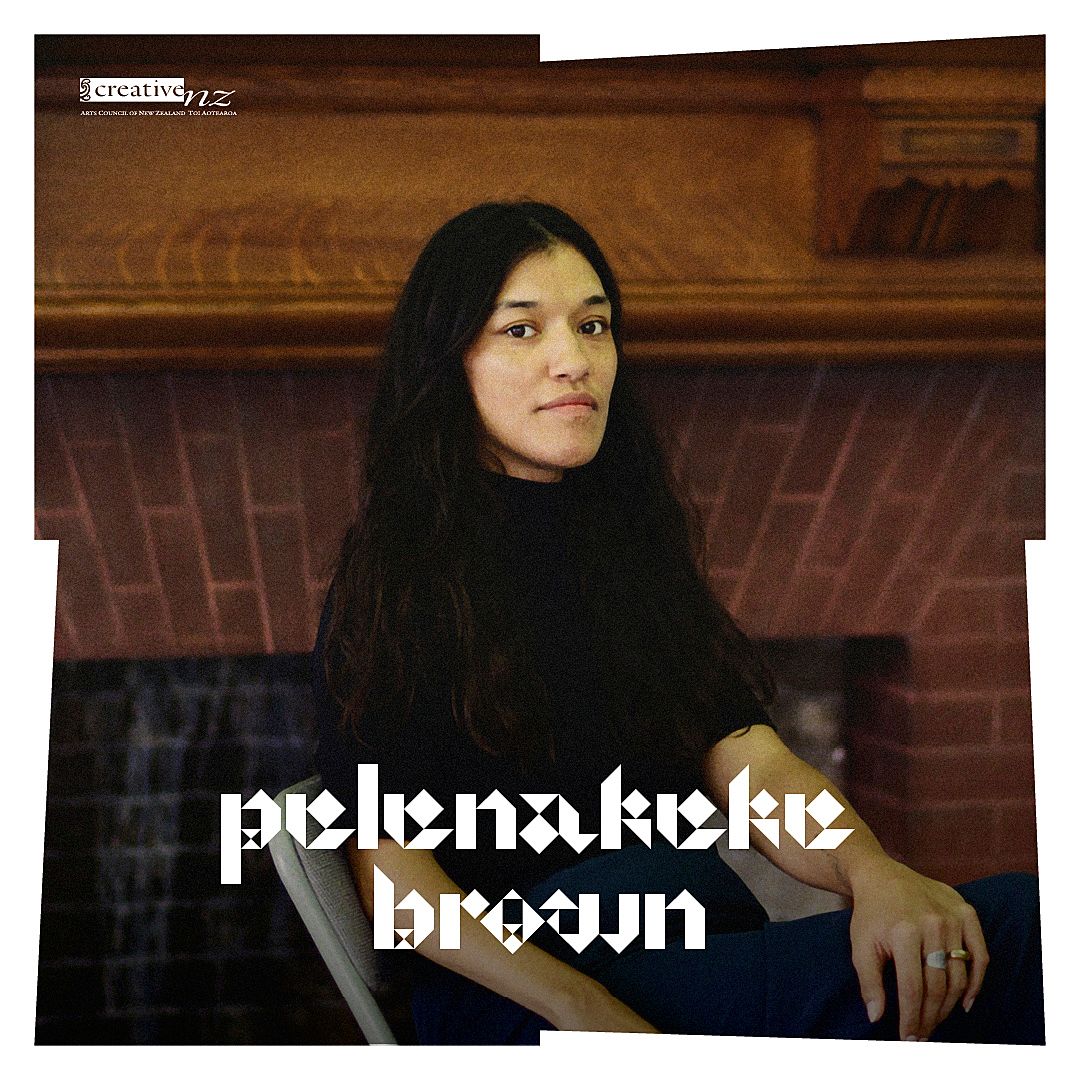From One Bloody Woman to Another
Leafā Wilson, Tusiata Avia and Pelenakeke Brown speak to Bloody Woman by Lana Lopesi.
Lana Lopesi’s latest collection of essays explores the overlap of being a woman and Sāmoan. Writing on ancestral ideas of womanhood appears alongside contemporary reflections on women's experiences and the Pacific. We invited three Pacific women to write about it.
Leafā Wilson
*
Malo uso, Lana!
You know what? To be honest, I am quite frankly intimidated to write anything in relation to your work, Bloody Woman. “Why?” you ask with incredulity. Because your ‘bloody womanness’ is mamafa! It is heavy, it is challenging, it is real, and it is yours/ours. In your essay ‘Becoming A Bloody Woman’you write, “There are points where language is so impossible it causes a kind of paralysis.” The immensity and import of these essays have had that kind of effect on my ability to respond articulately and with the due respect I have for your intellect and your writing – I do not want to fuck this up.
You cover so many bloody incredibly salient points that I KNOW that, for each of us within the Sāmoan diaspora who identifies as a woman here and now in Aotearoa, your openness and generosity will reach into the next generations and light up the path for us to see a little clearer and to articulate our positions so much better than we do.
Struck by the sheer vānimonimo, expanse of time–space of your reasoning about gender and capitalist power structures, I bow to the work you have done, for yourself, but for us too. Like our grandmothers and mothers, you have shelled multitudes of pinati for us to consume with ease. So many that I am only responding to the texts that I have read and, in my current Covid-addled mind, been able to digest at the moment. I want to have more soon.
You cover so many bloody incredibly salient points that I KNOW your openness and generosity will reach into the next generations
Thank you for putting out in this Aotearoa world that the current forms of feminism do not speak with accuracy of our specific, gendered and Sāmoan style of feminism. Ours is about two percent accidental feminism, and the rest is straight-up our own toa (strength). What I know of the types of gendered roles decried in Western notions of feminism is turned upside down and inside out in our Sā(moan) version. Ours is enacted without analytical texts but gestured through the solemnity or raucousness of our mothers. Those whose silences or shouting speak the equivalent of the best feminist tomes. Their foul-mouthed double-entendre words whispered in group gatherings, where their laughter belies the filthiest innuendo, is a power not recognised as a kind of feminism because the word ‘rights’ isn’t involved. The ability of the fa‘afafine to stand up as women in Sāmoa and here in Aotearoa is a strength that nullifies being TERFed out in larger constructions of Westernised feminism. You, Lana, acknowledge all and, in doing so, uplift all.
The ability of the fa‘afafine to stand up as women in Sāmoa and here in Aotearoa is a strength
You’re right, there is so much tangibly written about Sāmoan men in our art histories, and it is something that has quite frankly pissed me off for many years. But I realised that, in spite of art history preferring their mark making, it has always been our women pulling the intellectual and scholarly weight. Momoe Malietoa Von Reiche is one you mention, and the tusitala, Tusiata Avia, whose words and works give me hope. Then there’s Dr Caroline Vercoe, Yuki Kihara and Lisa Taouma, whose critical texts really made headway in bringing us all into visibility; especially those whose womanhood has been decried by transphobia. You honour our Black sisters such as Kimberlé Crenshaw, who fought bloody intellectual battles for their/our voices and their/our alterity to be respected as particular to us women of colour without need of approval from Western feminism. You graciously acknowledge, though, the work done by our Pālangi sisterhood.
I love that you are taukalaikiiki enough to write all of these texts that so accurately speak to our un-uttered, under-acknowledged lady bits and pieces
I love that you are taukalaikiiki enough to write all of these texts that so accurately speak to our un-uttered, under-acknowledged lady bits and pieces – internally and externally. Your upu mafanafana, words of comfort empower and exhort us to be bold enough to identify as women in spite of this placing us outside accepted Christianised norms within and without our current lives. Nafanua, the original blood clot, has imbued your words with such scarlet redness for all of us who identify as women of the Sāmoan diaspora to paint our faces and lips with lanu mūmū for a lifetime.
From this gender non-conforming bloody woman to you lou susuga Lana,
I bloody thank you!
X leafā
Tusiata Avia
Photo: Hayley Theyers Photography
Bloody Woman, Lana’s collection of essays, is a vā in itself, holding precious insights, knowledge and wisdoms. I have been drawn, with the magnetic force of the moon, towards the stories of our most powerful, mysterious Sāmoan women – aitu and goddesses – all my writing life. Taemā and Tilafaigā, the goddesses of the tatau; the Teine Sā, the spirit women; and the original blood clot, Nafanua herself. Nafanua is goddess of war and originator of the traditional form of Sāmoan government which still functions today. She was also the one who prophesied the coming of the Pālagi and the new religion that would supplant hers. It gives me great satisfaction and excitement that I am writing in the company of other Sāmoan women, like Lana Lopesi, in all our different ways, across the vā.
Bloody Woman is a vā in itself, holding precious insights, knowledge and wisdoms
Lana’s essays speak to my experience as a Sāmoan woman. ‘Tautalaitiiti Girls Need No Defence’, the first essay in the collection, keeps my experience – of being a twenty-year-old, fresh from New Zealand, living for the first time in Sāmoa – company. I was often accused of being a ka‘a , ‘one who roams freely and is suspected of having a lover’. I was not only accused of being kaukalaikiiki, but the whispers, looks and gossip (which followed me across the Pacific Ocean back to New Zealand) also told me I was a pa‘umuku.
Lana stitches together her own experiences, which are also ours; the same things that sit with us and our daughters. Her writings are relevant to my experiences as a woman born in 1966 and to my fourteen-year-old daughter today in 2021 Aotearoa. Lana talks to us and teaches us about the larger context in which all this is happening – the things I know instinctively, the things I absorbed through the pores of my skin.
Tusiata Avia’s text is quoted from Bloody Woman, pages 1–2.
Pelenakeke Brown
Photo: Emily Parr from Papa Clothing
The last 24 hours of my life have been partly dominated by a blood clot. My mum was complaining of chest pains all day, which were initially dismissed by her GP. By the evening the pain had increased and we called for an ambulance, who told us that they wouldn’t reach her for one to three hours, as she wasn’t “a priority”. When she was finally admitted to hospital, she told the doctors, “I am not leaving until you find the source of my pain.”
This may not sound like a big sentence to say, but for us, her daughters, teine Sāmoa, it was huge. She has had many experiences of being dismissed by medical practitioners but that night she knew she needed to listen to what her body was telling her. She was not going to leave until they paid attention. A few hours later, they found the clot, which was large and needed attention. A pulmonary embolism can be life threatening if it is not found.
Be the faikakala, the ka‘a, the Teine Sā – strong, unapologetic, bloody women
In the preface of Bloody Woman, Lana Lopesi introduces us to her own experience of clotting, with blood clots becoming a central theme in the book. The stubbornness of blood clots revealed to Lana that there was something for her to follow. Like a trail of stories and knowledge – a network of spotting. It told her that there is a power in our blood; that clots, often viscous in nature, are hard to get off our fingers. That she needed to pay attention to what they were telling her. As I read, I resonated so much with her writing and the way she articulated her experiences. Many that mirror my own.
What does Lana’s work have to do with my mum’s blood clot? Somehow both my mum’s experience as an immigrant Sāmoan woman and Lana’s words resonated and connected for me. Blood clots can be disruptive and dangerous. But they are also proof that we exist. There is power when you listen to your body and articulate yourself, especially in a world that doesn’t always listen to our words. We are not used to asserting ourselves; however, Lana’s book celebrates this. Be the faikakala, the ka‘a, the Teine Sā – strong, unapologetic, bloody women. The powerful stubbornness of us, our blood and our stories – Bloody Woman is a must-read.
Bloody Woman is published by Bridget Williams Books

